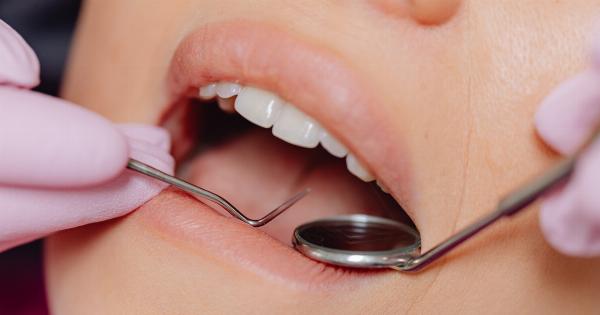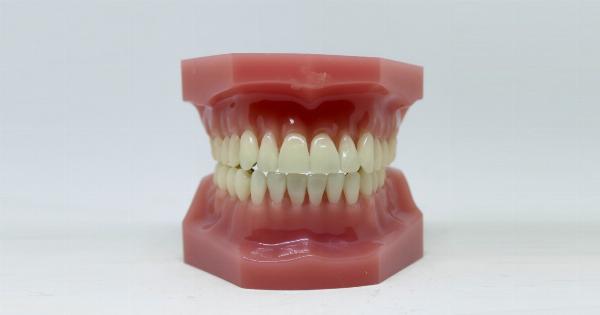Having a bright, white smile is a desire that many people have. Teeth whitening treatments have gained immense popularity in recent years, offering individuals the chance to improve the appearance of their teeth and boost their self-confidence.
However, before you jump on the teeth whitening bandwagon, it’s important to understand the truth about these treatments and consider several factors that can affect their effectiveness and safety.
1. Types of Teeth Whitening
There are several options available when it comes to teeth whitening, each with its own unique benefits and considerations:.
a) Over-the-counter whitening kits: These kits typically contain whitening strips, gels, or trays with a lower concentration of bleaching agents. While they are convenient and affordable, the results may not be as noticeable or long-lasting.
b) In-office professional whitening: This is a popular choice for those seeking immediate and effective results. It involves a visit to a dentist who applies a higher concentration of bleaching agents.
This method can be more expensive but often provides better outcomes.
c) At-home professional whitening: Dentists can also provide custom-fit trays with a higher concentration of bleaching agents for at-home use. This option combines the convenience of at-home treatment with the guidance of a dental professional.
2. Effectiveness of Teeth Whitening
Teeth whitening treatments are generally effective in removing stains caused by certain foods, beverages, and lifestyle habits. However, the level of effectiveness can vary depending on various factors, including:.
a) The type and severity of stains: Teeth whitening works best on surface stains, such as those caused by coffee or tobacco. Deep intrinsic stains or discolorations due to dental issues may not respond as well to whitening treatments.
b) Natural tooth color: Whitening treatments are more successful on teeth that are naturally yellowish or slightly gray. They may not produce significant results on teeth that are naturally brown or have a bluish tint.
c) Technique and frequency of treatment: Following the instructions provided by the teeth whitening product or dental professional is essential to achieve optimal results.
Overuse or improper application can lead to tooth sensitivity and other complications.
3. Potential Side Effects
While teeth whitening treatments are generally considered safe, there are a few potential side effects to be aware of:.
a) Tooth sensitivity: Many individuals experience increased tooth sensitivity during or after whitening treatments. This sensitivity is usually temporary, but in some cases, it may persist for a longer period.
b) Gum irritation: Whitening products that come into contact with the gums can cause irritation, leading to discomfort or even mild inflammation. It is important to follow the instructions carefully and avoid excessive contact with the gums.
c) Uneven whitening: Teeth whitening treatments may not produce uniform results. Certain areas of the teeth may appear whiter than others, causing an uneven or streaky appearance. Professional treatments often minimize this risk.
4. Existing Dental Restorations
If you have dental restorations such as fillings, crowns, or veneers, it’s crucial to consider how teeth whitening may impact them:.
a) Uneven coloration: Dental restorations are not affected by teeth whitening agents. This means that if you undergo teeth whitening, your natural teeth may become whiter than your existing restorations, resulting in an uneven smile.
b) Replacement considerations: Teeth whitening may prompt individuals to consider replacing their restorations to match their newly whitened teeth. This can add to the overall cost and may require consultations with your dentist.
5. Maintenance and Longevity
Teeth whitening is not a permanent solution, and the longevity of the results can vary from person to person:.
a) Lifestyle choices: Certain habits like smoking, consuming staining foods or beverages (e.g., coffee, red wine), or neglecting oral hygiene can accelerate the reappearance of stains on teeth.
b) Need for touch-up treatments: Periodic touch-up treatments may be necessary to maintain the desired level of teeth whiteness. The frequency can depend on individual factors, including diet and oral hygiene habits.
c) Investment: Consider the initial cost of the treatment along with the potential cost of maintenance when deciding if teeth whitening is right for you.
6. Consultation with a Dental Professional
Prior to undergoing any teeth whitening treatment, it is highly recommended to schedule a consultation with a dental professional.
They can assess the overall health of your teeth and gums, determine the most suitable whitening method, and provide guidance throughout the process.
7. Alternative Options
If teeth whitening is not the ideal choice for you, there are alternative options available to improve the appearance of your smile:.
a) Dental bonding: This involves the application of tooth-colored resin to the teeth, covering stains and improving their appearance. It is a non-invasive procedure with immediate results.
b) Porcelain veneers: Veneers are thin shells customized to fit over the front surface of teeth, providing a whiter and more uniform appearance. This option is especially beneficial for those with extensive discoloration or other dental imperfections.
8. Personal Considerations
Finally, it is crucial to consider your personal needs and expectations before deciding on teeth whitening:.
a) Realistic expectations: Teeth whitening can significantly improve the appearance of your teeth, but it may not lead to a complete transformation. Understanding the limitations and potential outcomes can help you set realistic expectations.
b) Oral health concerns: If you have pre-existing dental conditions, such as tooth decay, gum disease, or hypersensitivity, it is important to address these issues before pursuing teeth whitening treatments.
c) Budget: Teeth whitening costs can vary depending on the method chosen. It is important to assess your budget and consider the long-term maintenance expenses associated with the treatment.
Conclusion
Teeth whitening treatments can be a game-changer for your smile, boosting your confidence and enhancing your overall appearance.
However, it is essential to understand the various factors involved, including types of treatments, effectiveness, potential side effects, impact on dental restorations, maintenance requirements, and personal considerations. Consulting with a dental professional will ensure you make an informed decision tailored to your unique situation. Remember, a beautiful smile starts with a healthy foundation.




























